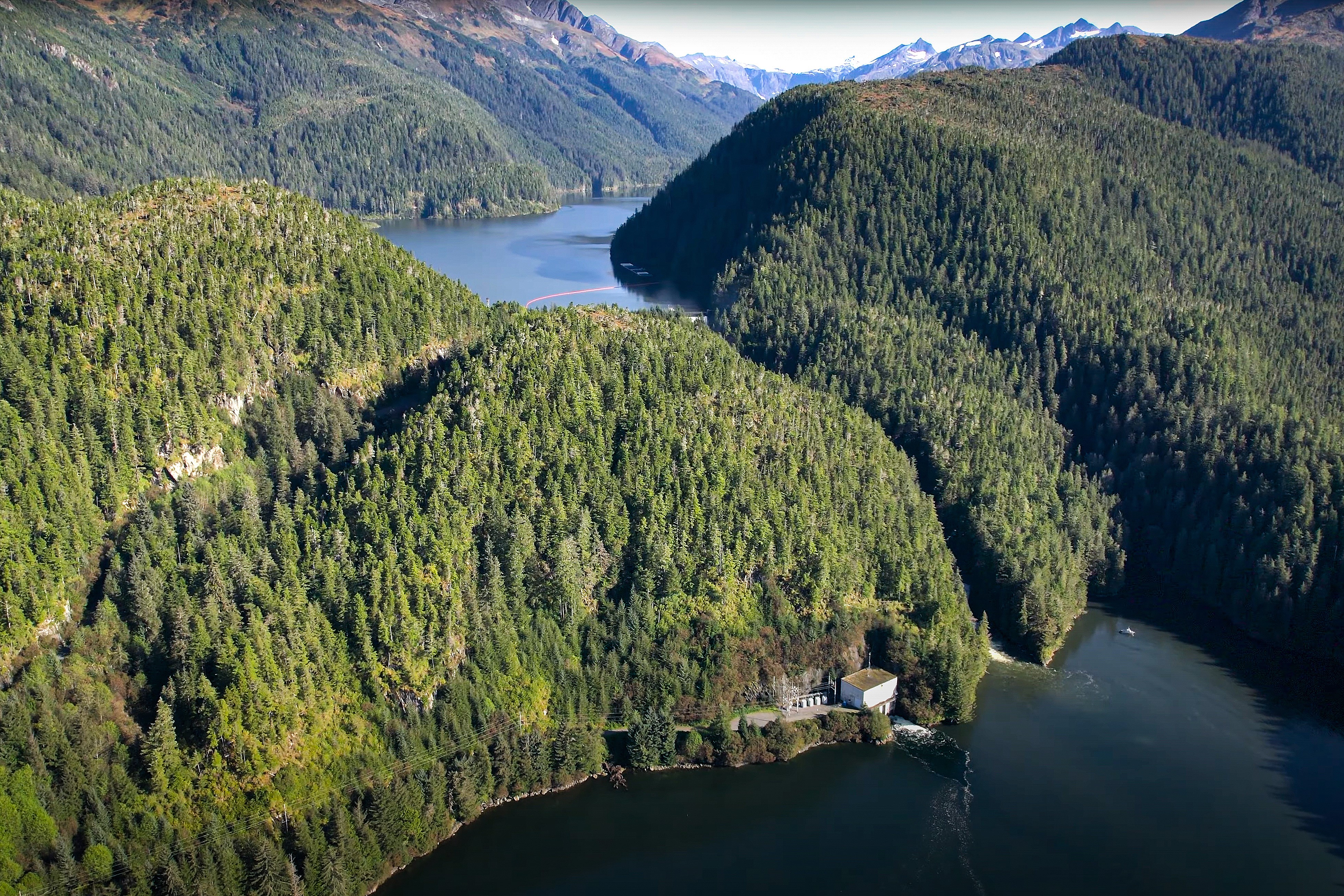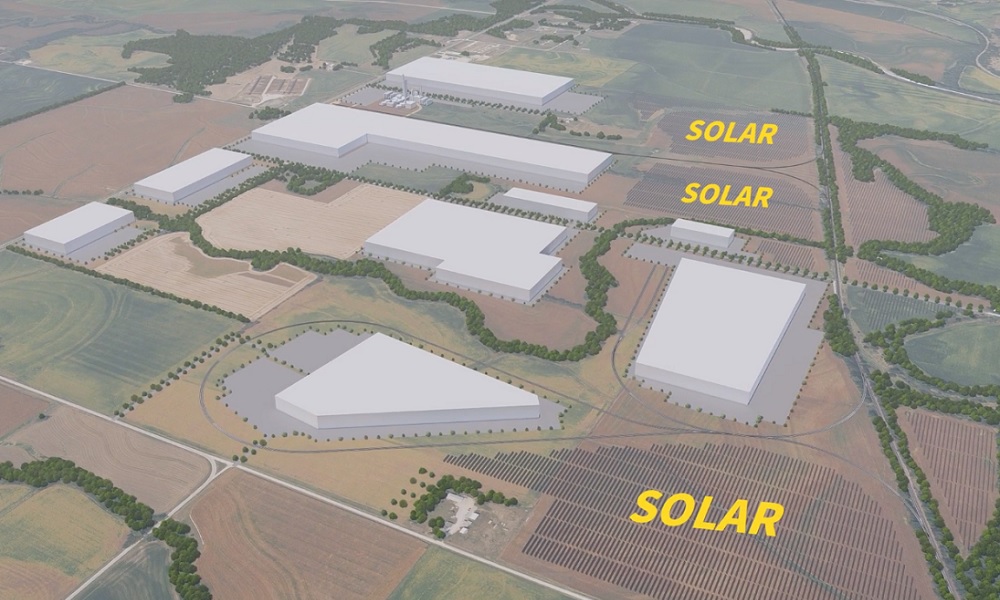In the past few years, the Infrastructure Investment and Jobs Act and the Inflation Reduction Act have brought a wave of new and expanded opportunities for public power utilities to leverage federal funding to move projects forward. Even more critical, several programs had funds set aside specifically for smaller entities, nonprofits, and organizations in rural or disadvantaged communities.
Identifying, applying for, and carrying out projects with federal funding can come in many forms. Here’s a look at how three municipalities sought and are using grants and other funding to support their electrical systems.
A Resilience Hub
Montezuma Light & Power obtained $9.5 million from the Department of Energy to construct a renewable community microgrid — the first in Iowa — that will provide energy resilience and lower the use of diesel.
The project began with a question to Montezuma’s superintendent, Kevin Kudart, from Anne Kimber, executive director of the Electric Power Research Center at Iowa State University: Would he be interested in developing a DOE Office of Clean Energy Demonstrations project?
He said "yes," and Iowa State, which is managing the project, pulled together the paperwork to apply for grant funding.
The community microgrid project is, in part, a response to a windstorm in August 2020 that took down many transmission and distribution lines, leaving some residents in the region without power for days. But Montezuma Light & Power was up and operating within 1.5 hours, thanks to a diesel-fueled microgrid that allowed the city to be a resilience hub for other communities in the county, said Kimber.
The renewable microgrid project will add 2.5 megawatts of solar and 1.5 megawatt-hours of battery capacity to the existing microgrid to reduce diesel use, lower costs, and cut emissions. The solar array will be located on a 10-acre parcel of city-owned land, and the microgrid will be owned and operated by Montezuma Light & Power, said Zhaoyu Wang, professor at Iowa State’s Department of Electrical and Computer Engineering and principal investigator for the project, along with Kimber.
DOE awarded the grant a year after Iowa State applied. To help attract funding, Kudart requested letters of support. He received 40, including from the local barber shop, the schools’ superintendent, and a local college. Community members were excited and proud about receiving power from solar, Kimber said.
“I think this project will lead to more interest in microgrids by public power communities in the Midwest, starting with Iowa,” she said.
Montezuma Light & Power will provide $2.5 million in cost sharing funds for the project. The utility has that money in reserve, Kudart said.

The solar-charged batteries in the microgrid will replace some of the power the utility purchases from the Midcontinent Independent System Operator market, said Kudart. When MISO prices are high, the battery can provide power to avoid the high prices, which generally run $100 to $200 per megawatt, he said.
The microgrid will operate during peak hours, generally from 1 to 5 pm, supplying power to 1,500 residents.
It’s estimated that peak shaving and reduced market purchases will cut costs by about $200,000 a year, said Wang.
Wang said project participants have grappled with three challenges in planning for the microgrid. First, they needed to justify the investment. Second, a time-consuming environmental assessment was required. Third, inflation increased the costs of the microgrid and extended the lead time to acquire switchgears.
Supporting Continuity

In Sitka, Alaska, attracting grant funding has a different focus. The city was recently awarded $2.5 million from DOE to maintain and upgrade one of the city’s two hydroelectric dams. Bri Gabel, sustainability coordinator for Sitka’s Planning and Community Development Department, said the aim is not to build new infrastructure, but to rehabilitate two hydropower turbines at the Green Lake Hydroelectric Project.
Sitka is an islanded microgrid and must generate all its own power. The Green Lake plant provides 30% to 40% of Sitka’s energy needs, and the rest of the city’s demand is met by the Blue Lake Hydroelectric Project. The city has diesel generators for emergency backup.
Both the Green Lake and Blue Lake plants have been operating for many years — Blue Lake since 1960 and Green Lake since 1982 — and the city wanted to ensure it could continue providing 99.9% clean power to the community, especially at a time when load is increasing because of electrification, Gabel said.
The application process began after Sitka’s mayor, administrator, and public and government relations director met with officials in DOE’s Water Power Technologies Office and returned with a brochure about funding opportunities.
“After researching them for applicability to Sitka’s critical projects, I made the recommendation to apply for a Section 247 incentive for the Green Lake rehabilitation. I started planning the application about seven months in advance of the deadline and started consolidating necessary documents between city departments,” Gabel said. About a dozen city staff members contributed to the application.
The project includes three phases. The turbine assessment phase has been completed. Gabel hopes the town can do the final two turbine refurbishment phases simultaneously to cut costs, but more upfront funding would be needed for that. The timing depends in part on the availability of contractors to do the work, Gabel said.
Stacking Benefits
For Falls City Utilities in Nebraska, funding is for a long-term economic development project that would require additional electrical capacity.
Falls City received a $15 million grant from the Nebraska Legislature to shore up the city’s electric infrastructure, and Falls City Economic Development and Growth Enterprise, or EDGE, a nonprofit public-private consortium, landed a $50,000 Communities Local Energy Action Program, or LEAP, grant from DOE. This will help Falls City EDGE study the feasibility of attracting new businesses with a solar microgrid or secondary transmission line that would serve a proposed industrial park.
A solar microgrid could attract new industries to the park, said Lucas Froeschl, executive director at Falls City EDGE.
The project is in Richardson County, Nebraska, which has been identified as a disadvantaged community by the federal government. The government also designated the area as “energy burdened” because only one transmission line feeds the city and it doesn’t have extra capacity.
The city now has a load of about 14 MW but doesn’t have access to additional power to help its community grow, Froeschl said. The city owns contracts for generation from a coal-fired plant, has a hydroelectric allocation, and meets its other supply needs by purchasing on the open market with assistance from the Municipal Energy Agency of Nebraska.

EDGE identified a business willing to locate in Falls City and buy power so the city could afford to install additional infrastructure. But the business didn’t want to locate in the area until the needed infrastructure was installed.
“So we’ve got the chicken or egg paradox going on,” Froeschl said.
In spring 2022, the city secured the $15 million grant from the Nebraska Legislature to help expand the electrical infrastructure.
Meanwhile, Falls City EDGE looked at acquiring property where it could possibly take advantage of local corn and soybean feedstocks to create a biofuels industry at the proposed Mid-America Rail Campus. The city received a $50,000 LEAP grant, which will pay for an engineer’s cost of opinion of that secondary transmission line. It also provides 18 months of technical assistance from experts at the National Renewable Energy Laboratory to draft a cost-benefit analysis on developing a solar-plus-storage microgrid to generate its own power. With that study, Froeschl hopes to pursue another round of federal funding focused on battery pilot programs or microgrids.
“We think that the timing is right to try to go after some of these projects,” he said.
In addition, Falls City EDGE has been awarded a $70,000 grant through the U.S. Department of Agriculture to pursue a Bioeconomy Development Opportunity Zone study. It was matched with $75,000 of in-kind work from Falls City EDGE and Ecostrat, which focuses on increasing the development of biofuels.
Right now, the single transmission line is curtailed multiple times a year, and the city fires up a power plant fueled by diesel and natural gas.
“So, effectively, we do kind of have a microgrid system going on through our power plant,” Froeschl said. The dual-fuel engine is started by diesel and then run by natural gas. It can power the whole town when needed, but it’s not cost-effective. “That power plant functions as our insurance policy,” he said.
A solar microgrid could offset demand during peak hours, provide resilience during power outages, and provide clean energy to the Mid-America Rail Campus.
Adding solar also could help the city attract businesses interested in using clean energy and potentially take advantage of tax credits for clean energy production.
Initially, the microgrid would provide peak shaving and resilience.
The hope is that the microgrid could provide some of the 50 MW of generation needed for the biofuels project and help attract emerging biofuels companies. The Mid-America Rail Campus could create prosperity for people within a 25- to 50-mile region, he said.
Connecting to Community Goals
An important aim for both the Falls City and Montezuma Light & Power projects is to educate residents.
“There’s probably nothing more important that I can do day-to-day than just make sure that our community is aware of what we’re doing, the businesses we’re trying to go after, and the prosperity we’re trying to create for the next generation. In my quarterly reports to city and county officials, we are asking all to keep an open mind to what we’re trying to do,” Froeschl said.
“The construction itself is not the biggest issue; it’s the money and design and communication with the local community that’s most important,” Wang agreed.
Of course, applying for grants and incentives is critical to achieving city goals, said Kudart. “We couldn’t pull this off without the grant, no way,” he said. “It wouldn’t be economically feasible.”
In Sitka, finding funding for the Green Lake project has been a challenge. The city, which is on an island in southeast Alaska, is isolated and can’t sell excess power to generate extra money.
“That’s why the DOE money is potentially so impactful,” Gabel said. The grant pays for a third of the cost of the work and shortens the project timeline. The rest of the funds will come from a portion of the town budget that Sitka has been building up for nearly a decade.
“Sitka as a community really values the hydroelectric infrastructure that their parents and grandparents have invested in, and it’s something that they want to utilize. So, our job is making sure that it keeps running,” Gabel said.
Smaller public power utilities might feel daunted by trying to keep up with the many grants and incentives available for upgrading or building new infrastructure. While it may, at times, be challenging to identify and apply for grants, the utility representatives said it’s worth the effort.
It’s important to weed through the options and choose the opportunities that play to a utility’s strengths, said Gabel.
“It’s a matter of filtering out the highly applicable opportunities from the not so applicable,” she said. “We looked at opportunities meant to enhance or reward us for our clean energy production.”
“It doesn’t hurt to do the application,” said Kudart. “If the opportunity is there, go for it.”

